PICTURE IMPERFECT
By Joe Rosenthal
PORTRAIT PHOTOGRAPHY BY JAMES GUSTIN
ART PHOTOGRAPHY COURTESY OF RICHARD NORTON GALLERY
STYLING BY THERESA DEMARIA
Fabián Cerón wearing Baglioli grey sport coat and black trousers from Saks Fifth Avenue
By Joe Rosenthal
PORTRAIT PHOTOGRAPHY BY JAMES GUSTIN
ART PHOTOGRAPHY COURTESY OF RICHARD NORTON GALLERY
STYLING BY THERESA DEMARIA
Fabián Cerón wearing Baglioli grey sport coat and black trousers from Saks Fifth Avenue
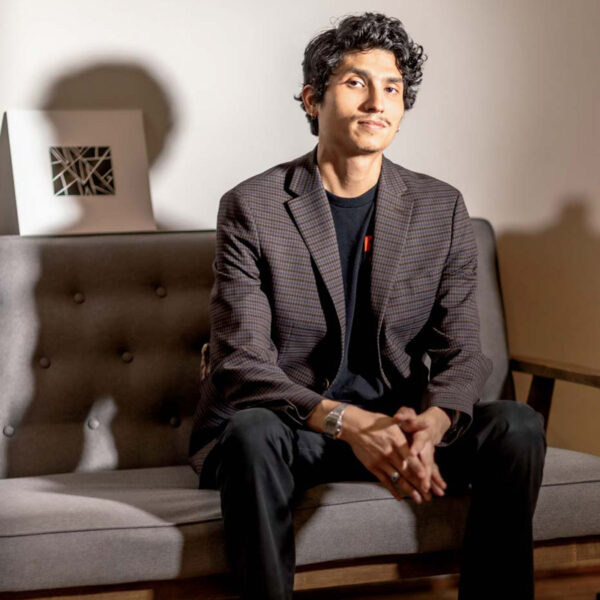
It’s not easy to define what makes some artworks resonate and others catch nary a glance. You could hang 100 relatively similar pieces on a wall, and a small fraction of those works—perhaps just one—would draw more people than the others. There’s an ineffable quality that makes them magnetic. It’s a “you know it when you see it” thing. According to Richard Norton Gallery Director Susan Klein, Fabián Cerón’s cameraless photography has this quality, and it’s one of the reasons why the 27-year-old Chicago-based artist is represented by the esteemed gallery.
I met Cerón on a recent September afternoon at the gallery, where he also serves as Director of Contemporary Art, a new role where he’s responsible for finding living artists to be shown alongside Chicago masters like Albert Krehbiel, Francis Chapin, and Karl Buehr. The walls brim with eye-grabbing paintings, sketches, and tiny wooden pieces of furniture from the location’s original incarnation as an antique shop. We take our seats at a small public sitting area in the back of the gallery, surrounded by five of Cerón’s deconstructed photography works. The abstract pieces are in varying sizes, and each is quite different from the other.
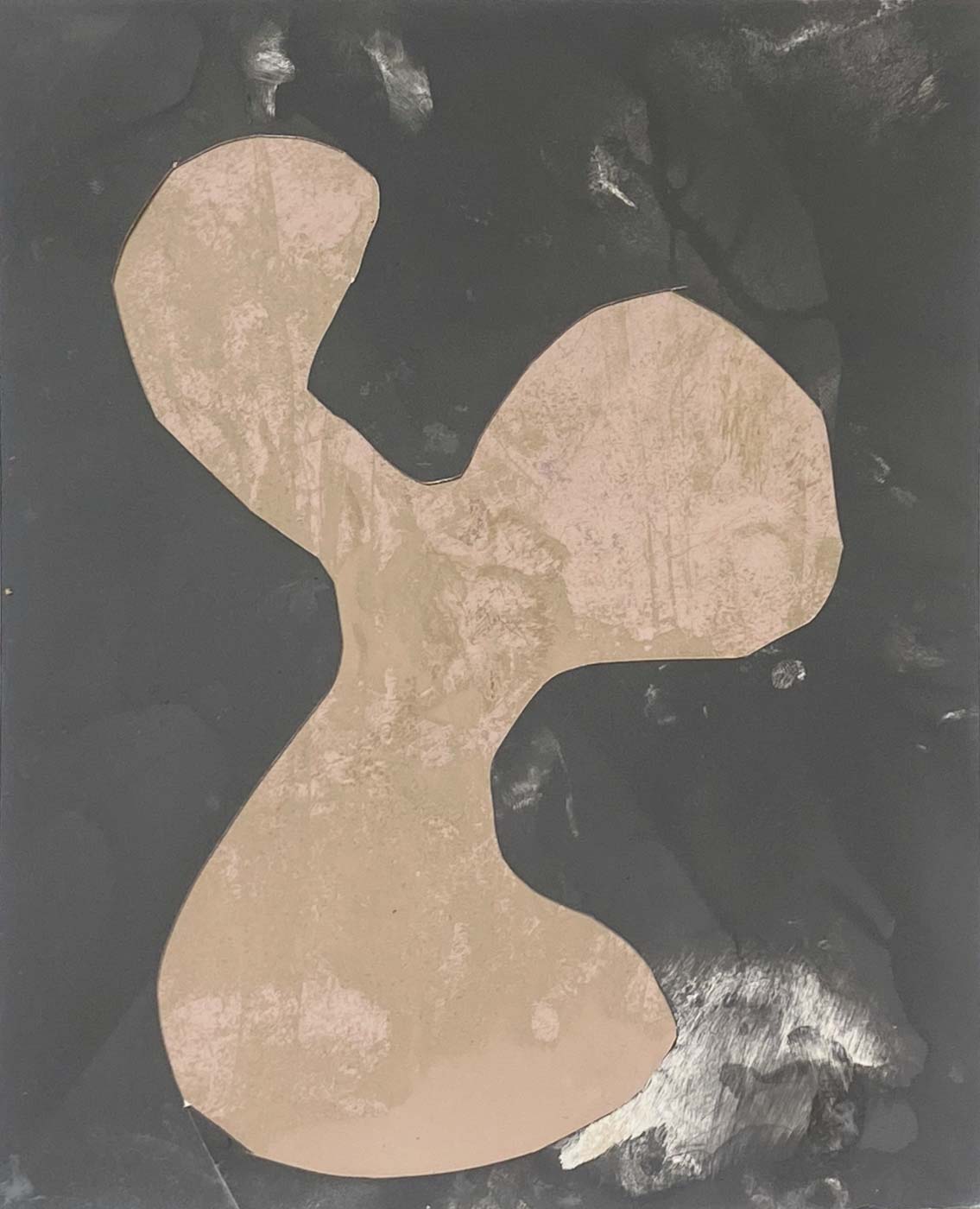
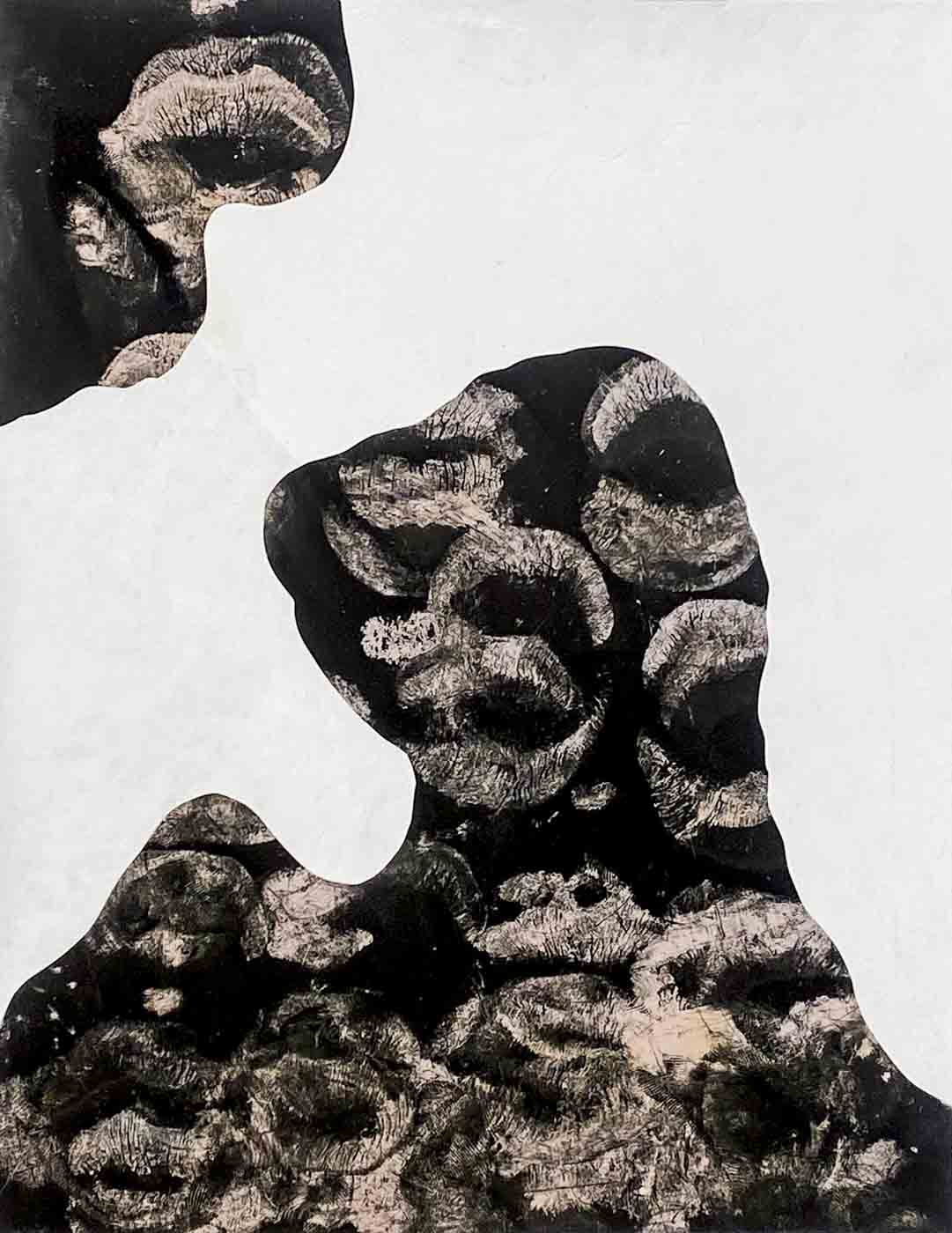
“I think it’s kind of a cool concept when you get a box of photo papers and it reads ‘black and white … use in a darkroom under X conditions,’” Cerón says. “There’s these sort of guidelines for how to use it, but there’s actually more to it. There’s more to discover from this paper. Just because it says black and white doesn’t mean solely black and white. So, I found that this relationship I’ve built with the process … I’m examining the paper, discovering what else it has to offer, peeling the layers.”
Cerón picks up Red Metropolis, #1, a 10” x 8” silver gelatin print. It looks nothing like a photograph, more an artifact than an image. The paper is thick and tactile looking, dark and silvery upon a bright red background.
“This is a collage,” he says, surveying. “That red you see beneath the paper is a gel. It’s the filter that you use to slide into the enlarger in a darkroom. There are different shades of this red, and each shade gives you a different contrast in the image when you print it.”
He shifts focus to a different part of the piece: “There’s a layer of resin of the gelatin silver on top which captures the light. The way I was able to get this metallic-looking effect was by dripping a [cleaning] chemical little by little onto the paper.” To finish it off, Cerón burned the paper, which created a bubbling effect.
For Cerón’s other works, he employed different tactics. Some are based on following his instincts and others are grounded in reading old textbooks and guides. For Besos Oscuros, he planted kisses on the photo paper, which appear within the outline of an abstract figure. For Noche Estrellada, which gives the impression of infinitesimal stars moving across a crystal-clear sky, he used a sandpaper block to scratch and blemish the photographic surface. For his self-portrait, he rubbed Vaseline on his face and then rolled the photo paper around it so that certain parts of the surface would be protected from chemical exposure. The result looks both primitive and regal. All of the works are mysterious and beg to be decoded.
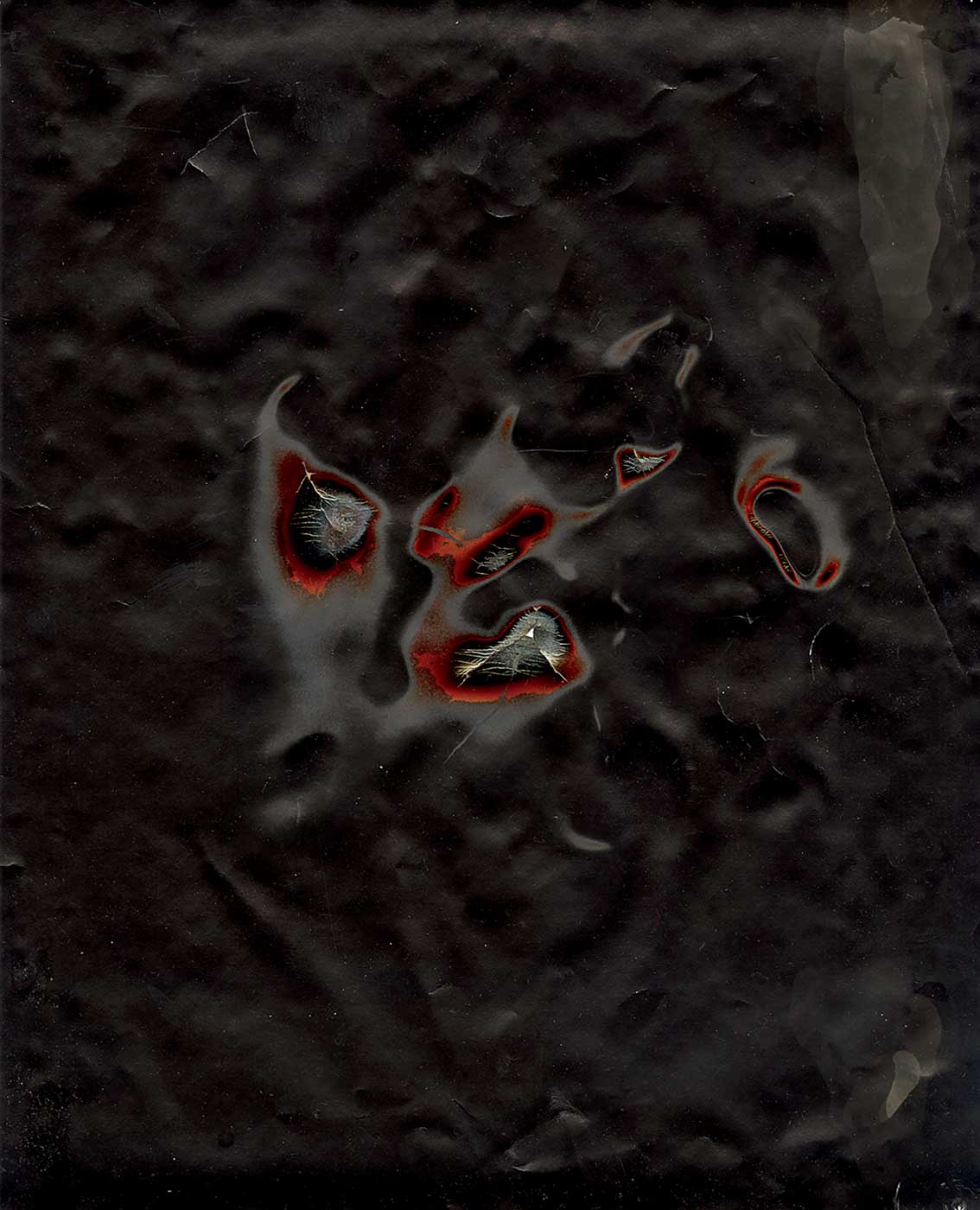
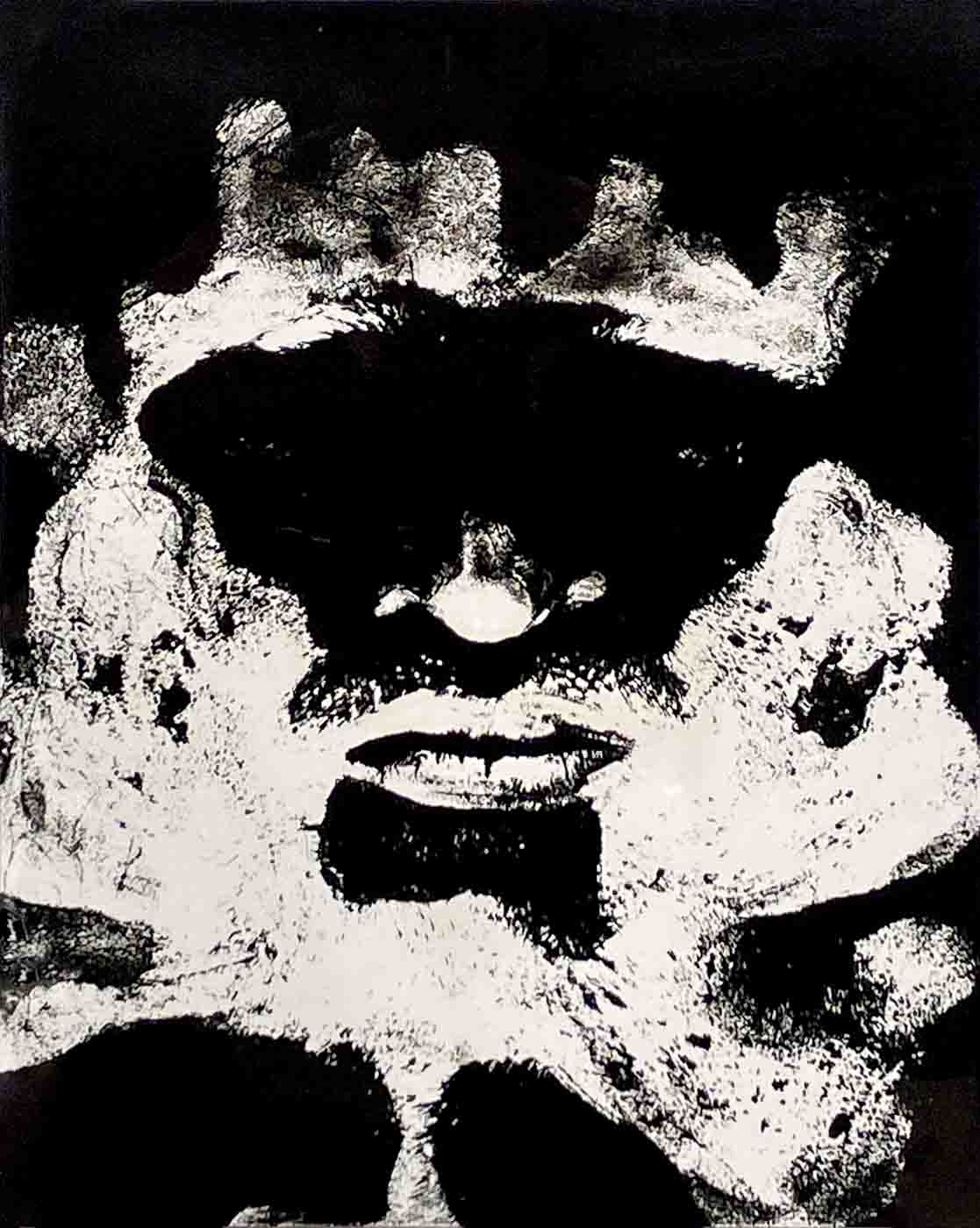
“[It’s] abstract expressionist, because they’re not representational. They’re very emotional,” he says. And while he’s clearly tapping into the abstract expressionist movement, Cerón also sees himself as part of a Chicago continuum that started in the late ‘30s with the New Bauhaus movement founded by László Moholy-Nagy.
“I’m very much influenced by László and his principles of light. I didn’t realize how big of an impact early 20th-century Chicago would have on my work,” Cerón says. “It wasn’t until I got here and started to learn about New Bauhaus. I’m just riding the next wave, remixing what the artists did before me.”
It’s an instinct that comes naturally. Cerón was born in California, where his parents, both of Mexican heritage, had met and were making a living selling houses. His dad was a skateboarder, and he dreamt of opening a skate park and cafe on the beach in Mexico. But Cerón’s mom thought better of it and suggested they find a place to open a restaurant in the States. They settled on a location in central Wisconsin and began a lifelong journey as restaurateurs. As a young kid growing up, there was always cooking in the house and lots of artwork and music, so Cerón was exposed early and often to the mixing (and remixing) that’s inherent to all those art forms. Both of his parents were also comfortable behind the camera. His mom was a photographer, and his dad was fond of filming moments in their young family’s life.
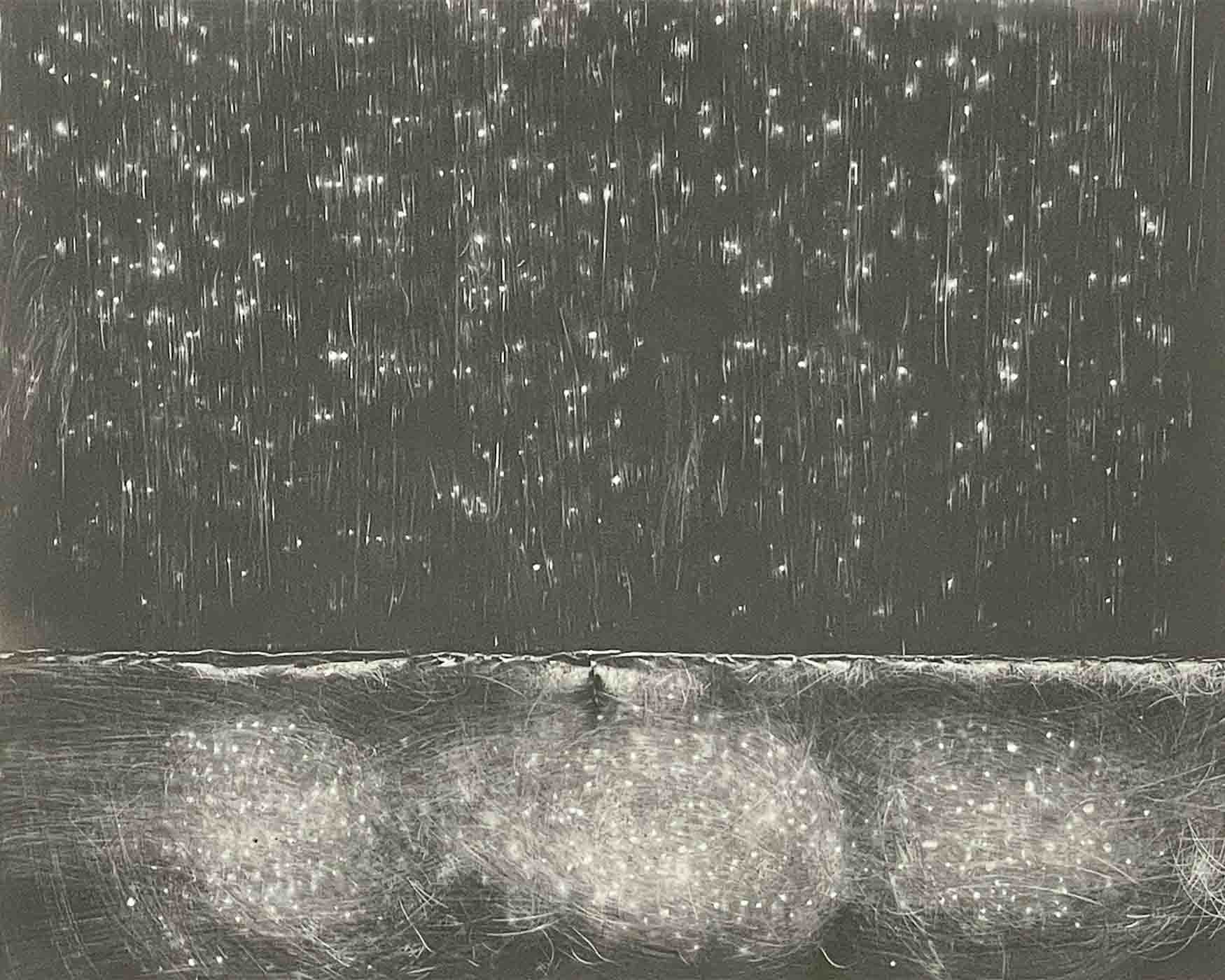
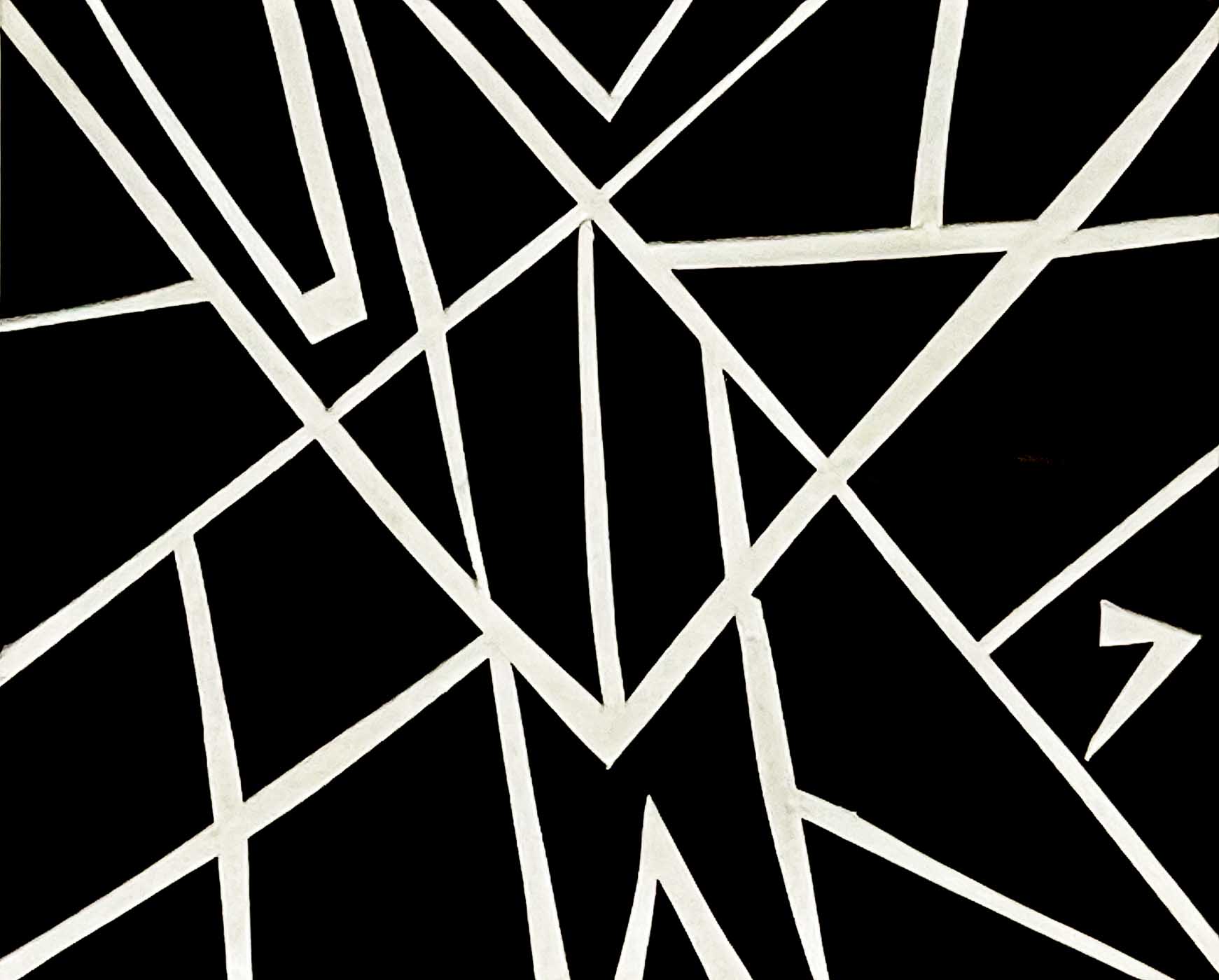
“They were always taking us to museums and galleries. We traveled extensively together as a family at a young age. That’s probably where it all started,” recalls Cerón.
Cerón further explored art in high school and found a path for himself in the photography program at the University of Wisconsin–Milwaukee, where his unique take on camera-less photography (as it sounds, exposing film directly in the darkroom without ever passing it through a camera) was born. Studying under Joseph Mougel, Lindsey Lochman, and Allen Morris, he began experimenting—changing chemical mixtures, interacting with the film, burning and cutting the media.
“When photography started it was chemists in lab suits trying to figure out how to capture light,” he says. “It wasn’t an art thing yet. But then I started wondering what it would be like to be one of those chemists in that lab coat trying to figure out the chemical process. What is photography? How do you do it? I was also putting it into the context of contemporary art. So I was like, what if a painter and a chemist came together and made work?”
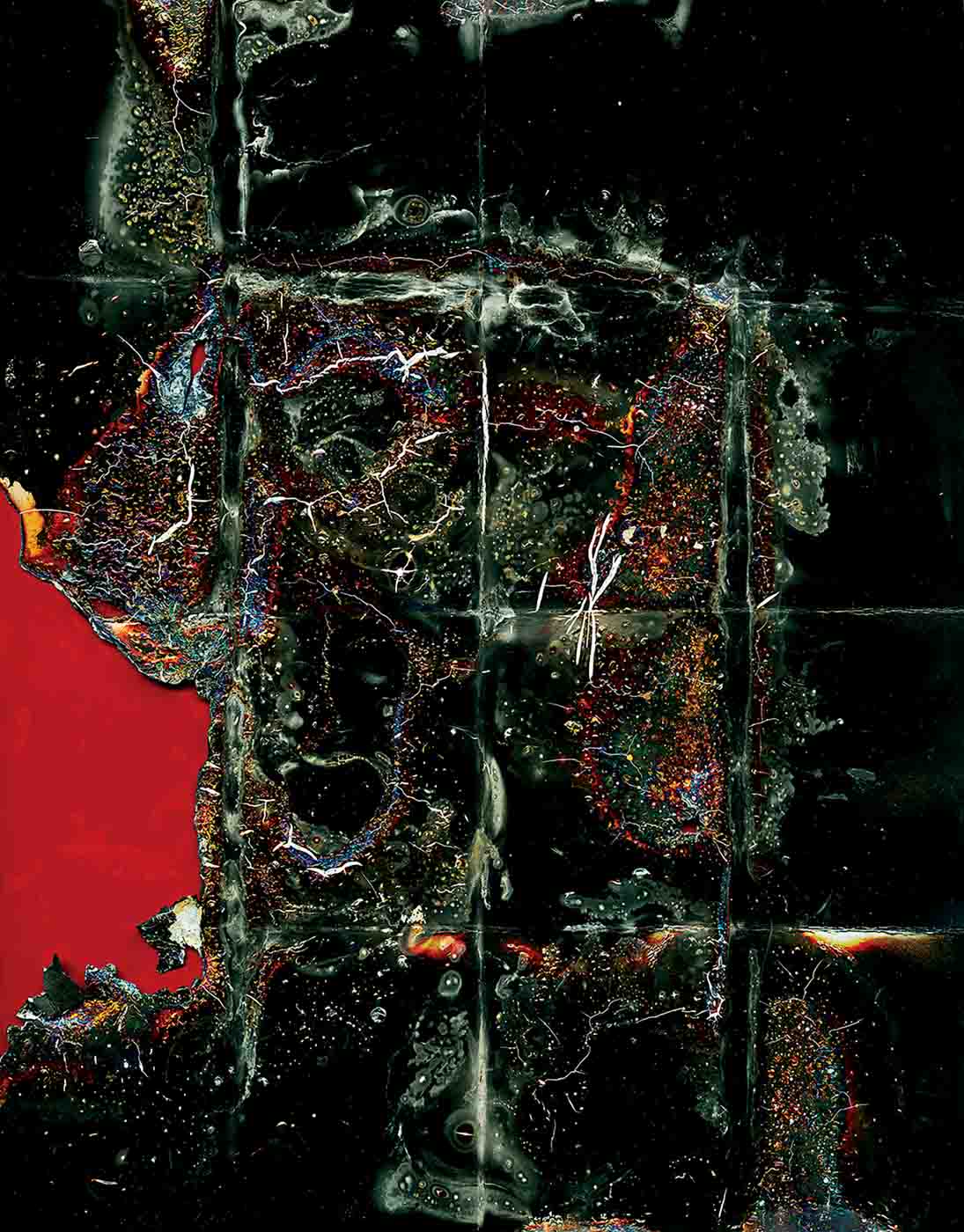
These questions became the root of Cerón’s motivation, leading him through school, into shows, into a form of work that’s uniquely his own, and to this moment in time.
It’s clear already, at this early point in his career, that Cerón is in command of his trajectory. And now there are new questions to answer, which seem set to move the young artist (who also, it should be noted, performs as DJ Brilla) to new and different creative places.
“I’ve gotten into a lot of graphic designing. I’m working on merch, some streetwear. I do a bit of painting, some drawing.” He seems a little amazed by it all. “This is just what you do, right? It’s live and breathe art. A dream come true.”
Cerón’s work has been shown at Richard Norton Gallery, EXPO Chicago, the 40th Annual SECURA Fine Arts Juried Exhibition at the Trout Museum of Art in Appleton, Wisconsin, and he had his first public solo exhibition, Decoction, at the Refraction Gallery at UW-Milwaukee in 2022.
Sign Up for the JWC Media Email